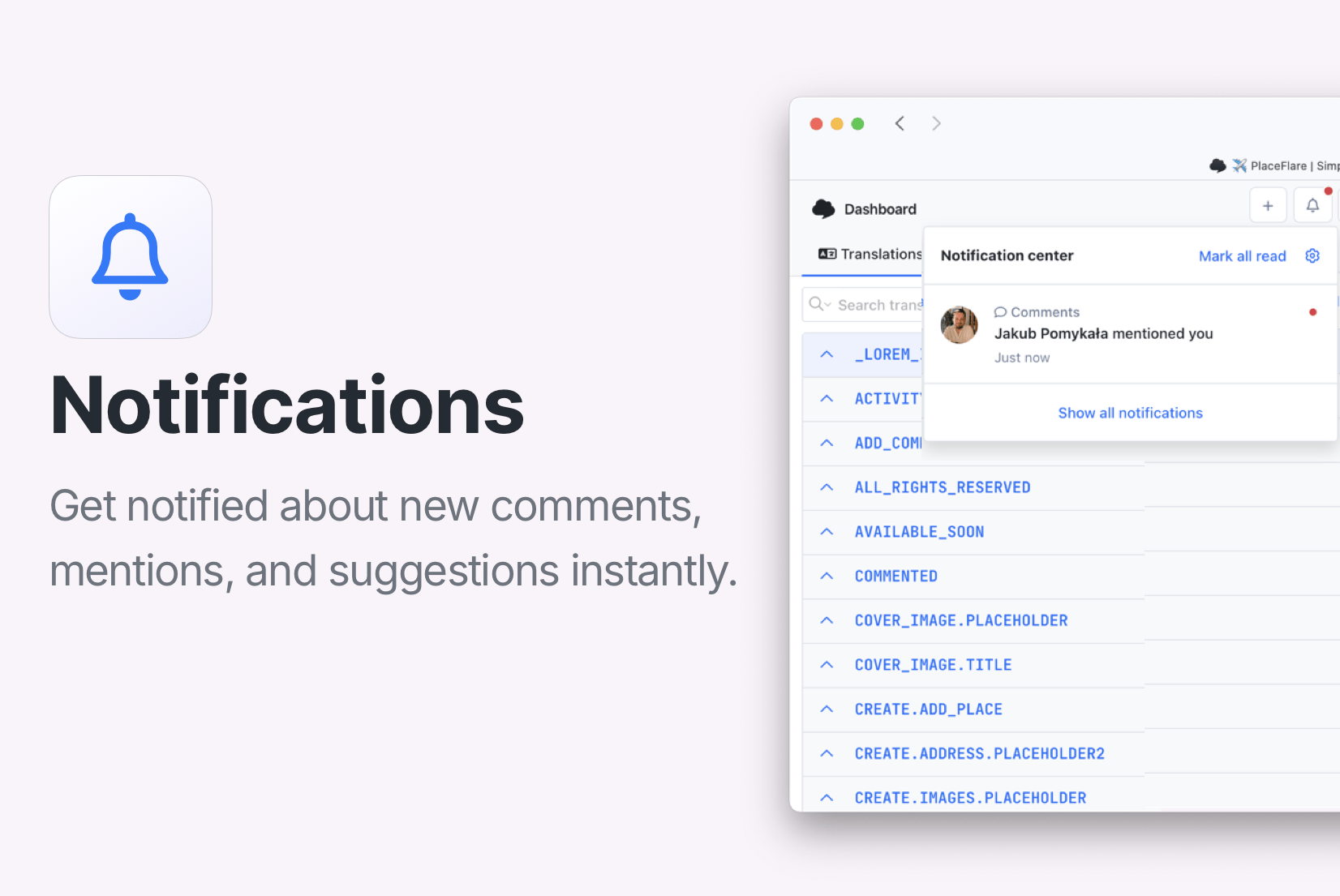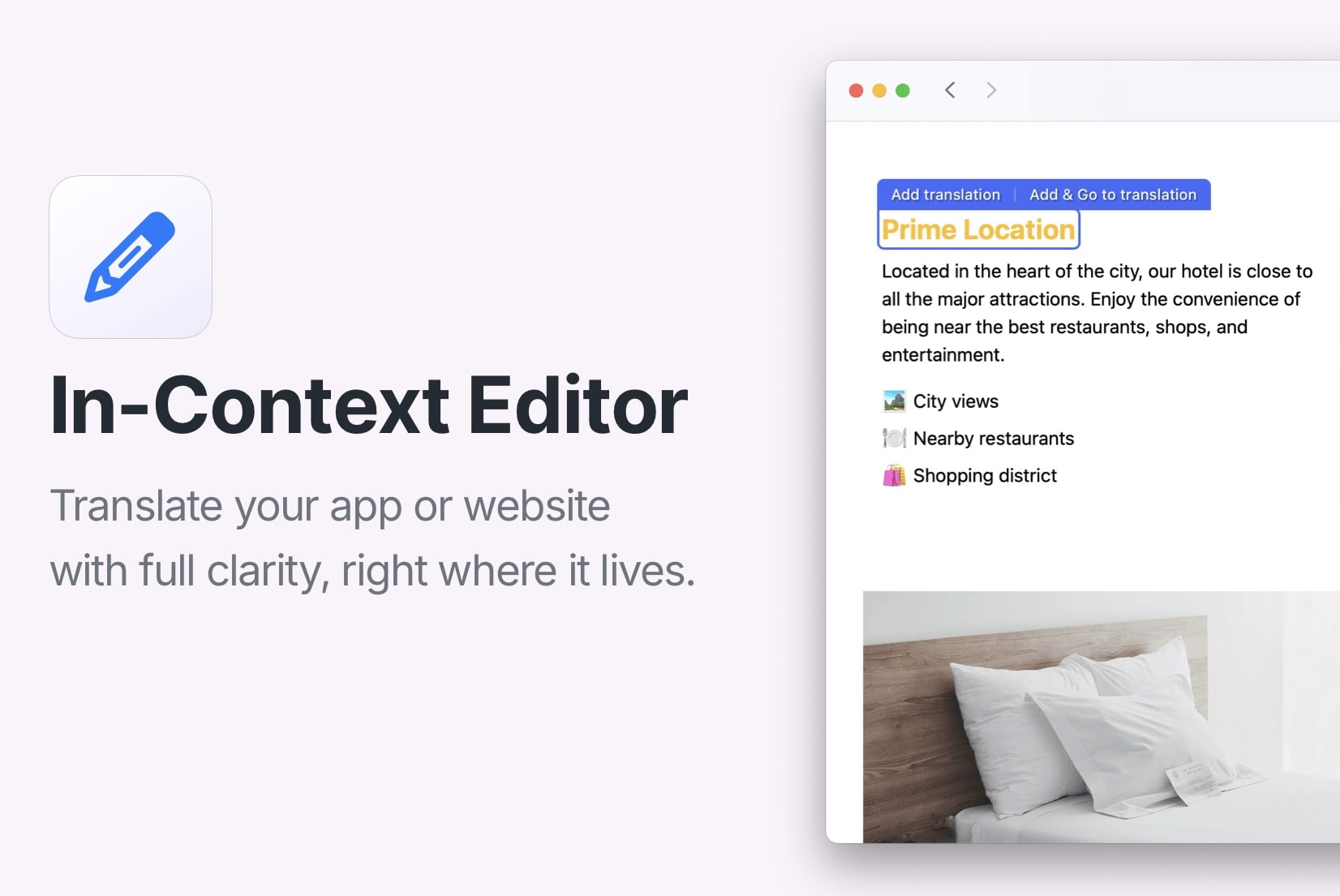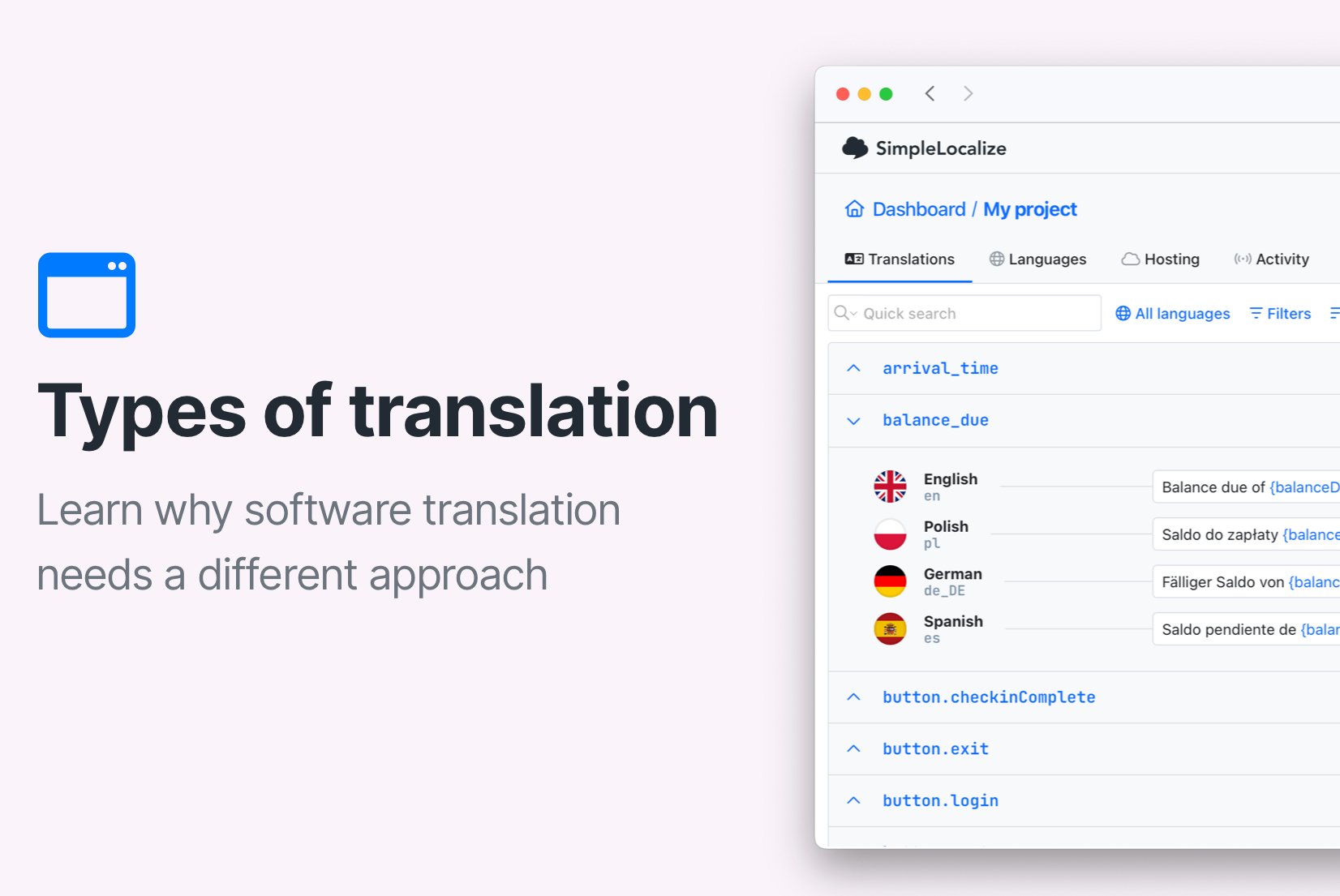What is translation management?
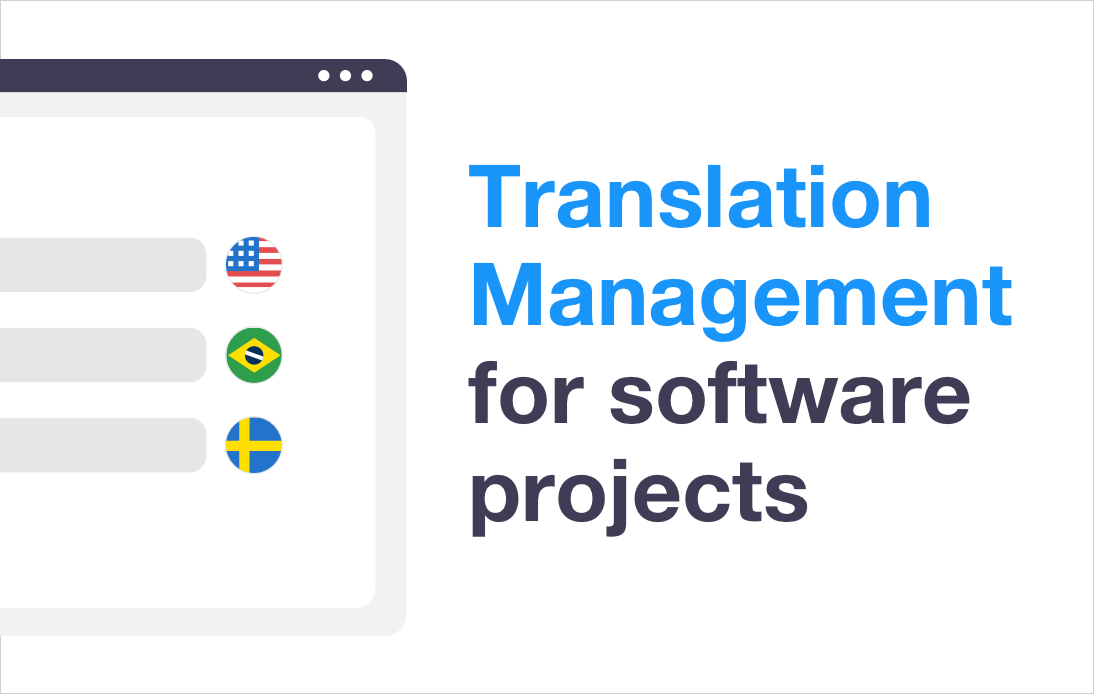
At first sight, the term translation management defines it by itself. But what does it mean for project owners, developers and translators? Results that it may have different meaning depending on your role in the project. Let's consider how each of the role understands translation management, how does it work and how it improves day-to-day operations.
Translation management in software projects
Whatever your role in the project, you are bound to be dealing with translations. Even if you're not a translator or programmer yourself, you use a translated, off-the-shelf system. As your project expands, it offers more language options for the customers, so you can switch between them in your product. How does it usually work from the management side in each step? Let's play three roles, developer, translator and salesperson in two scenarios: without and with translation management implemented.
Role: Developer
As a developer, you have a different view of software translation than other team members. What does that process look like from the dev team perspective?

Scenario 1: Without translation management implemented
9 AM at your desk, a new task pops up saying that both web and mobile apps must be translated into three languages. Your React project uses only English now, so you wonder how you can manage all translations. You start searching for libraries that will work well for your project and won’t be too time-consuming to implement. In the end, you decide to use React-intl. You look at the documentation and find out that you need to change all text into keys and put them into JSON files. Is there any way to automatize it? Unfortunately, no. What would you do to have it done at the very beginning of the project? Well, that’s a lesson, let's get to work.
You convert existing texts into FormattedMessage components. One by one. Your project is quite big, so it takes time.
What a sample text looked like at the beginning:
<p>
Machine details
</p>
What does it look like with react-intl:
<p>
<FormattedMessage
id="machine.details"
defaultMessage="Machine details"
/>
</p>
You also need to move each key and text to JSON file, to corresponding language versions, like this:
# /locales/translations/en.json
{
"machine.details": "Machine details"
}
# /locales/translations/es.json
{
"machine.details": "Detalles de la máquina"
}
Now, when you have all the translation files ready, it’s not the end yet. What do you need to do when there is a new functionality?* You add a new key and corresponding translation you received from the translators' team, one by one, to JSON files? Then you wait for deployment to push them to the live version? Maybe you need to build an internal translation system for the team to automatize the process?
Imagine all the work that needs to be done without a good translation management system in your project. For developers, translations sound boring, and they require a lot of work and time, that they could spend on much more interesting functionalities.
Scenario 2: With effective translation management implemented
At 9 AM at your desk, a new task pops up saying that both web and mobile apps must be translated into three languages. You already have React-intl implemented for such cases, you knew that it will be necessary one day. First, you need to create JSON files for new languages and that's all. Translations are prepared and published by the translators' team in SimpleLocalize cloud editor, and they can be pushed to your app automatically. Without copying and pasting all translations manually and hoping that there are no errors.
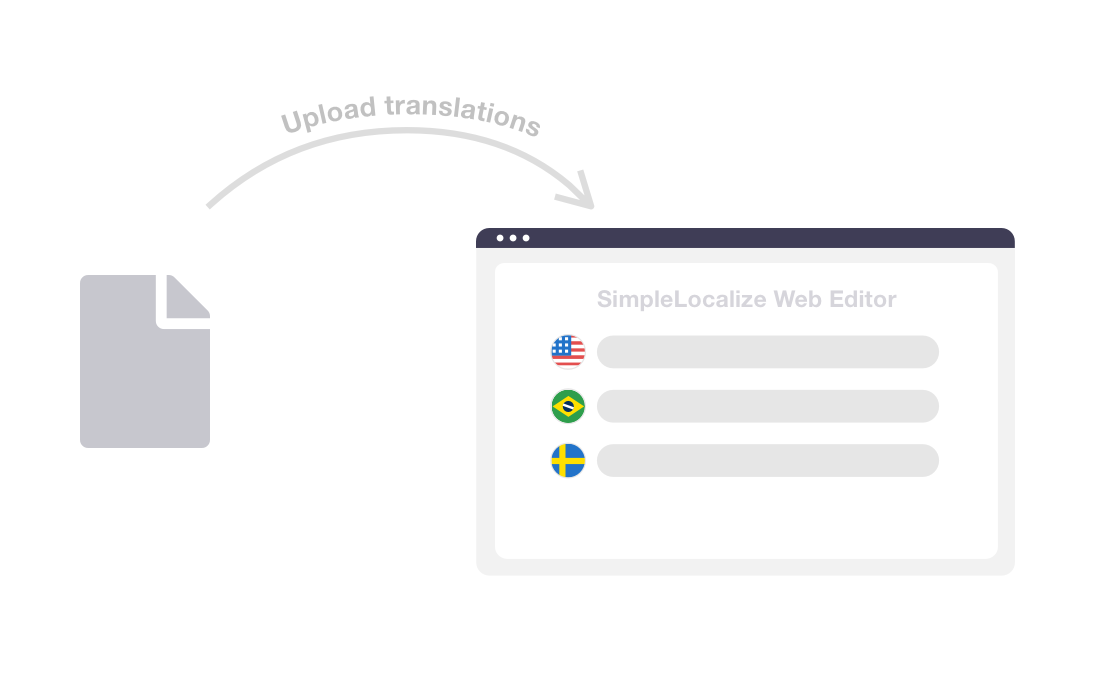
How does it work when you add new functionality to the project? SimpleLocalize-CLI finds all i18n keys in the source code automatically and shows them in the editor.* You do not export keys to send them to translators—it is all done automatically, and you can focus on other tasks.
Role: Translator
You are probably not working as a translator regularly, but you know the language so you can prepare the translations. What does translation management mean to you?
You receive a task from the PM to translate the software to Spanish. Will you receive a list of all texts from the dev team? Or you need to search for them and translate in Excel to send the file back to programmers? That’s very time-consuming.

Better, when there is at least an internal translation system created, then you need to translate all texts. However, the problem appears when the translations are not added and updated regularly—it is challenging to track all changes and versions, to keep everything up to date.
SimpleLocalize cloud editor appears to help here. In the editor, you can filter all translations, see the progress of each language, and you can check which and how many translations are missing. In conclusion, it keeps the translation process as simple as possible.
Role: Salesperson
As a sales hero, you don’t work with translations on a daily basis, but it affects you sometimes when a translation is missing. During a presentation of your product, you notice this, a not translated key:
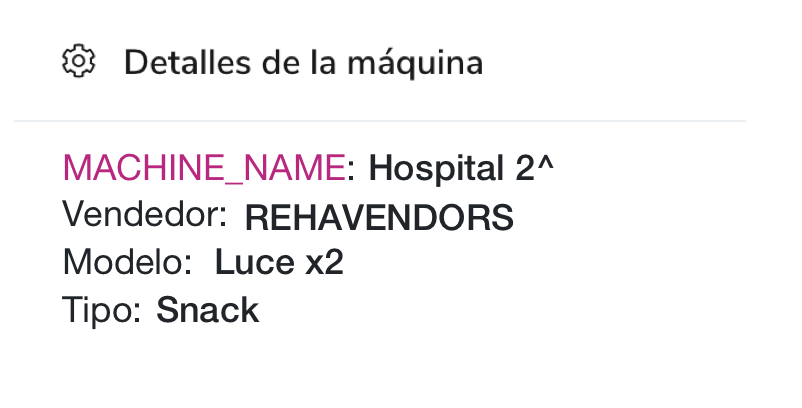
Oh, it had to be added with one of the updates. How long has it been there? It looks very unprofessional for the client, like the product has not been finished. You return the issue to the translator to add the text. What else can you do?
With efficient translation management software, such situations would not have occurred. Thanks to the easy integration and cloud editor, SimpleLocalize helps you keep all translations up to date and remove unused keys. Moreover, with easy access to an online platform, you can add translation and publish it to appear immediately in your product.
Translation management—do I need it?
As you can see, effective translation management improves the quality of work of multiple teams in different areas. From the developers, thanks to easy integration, through the translation or support team who have easy access to translation tools, to the final presentation of the product by the salesperson. Managing project internationalization with SimpleLocalize makes it easy to control and introduce new languages and customizations to your product. Check how it could help your project with a 14-day free trial at SimpleLocalize.io or test a free version for a smaller app or website.
